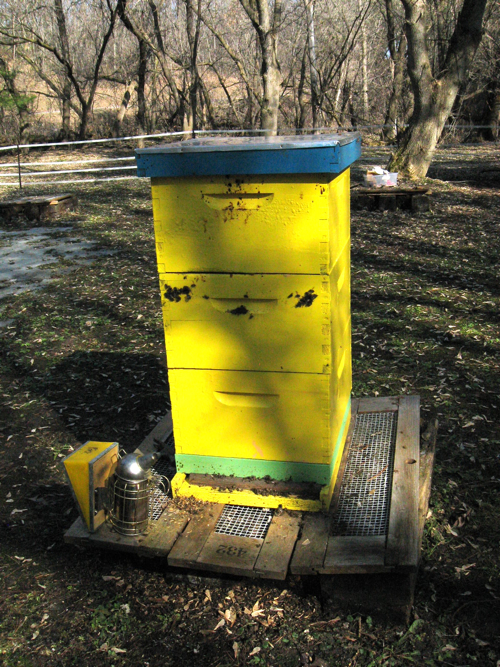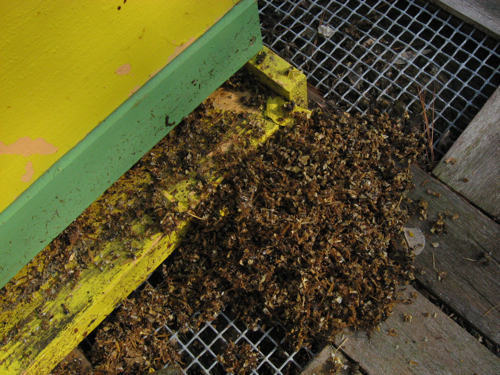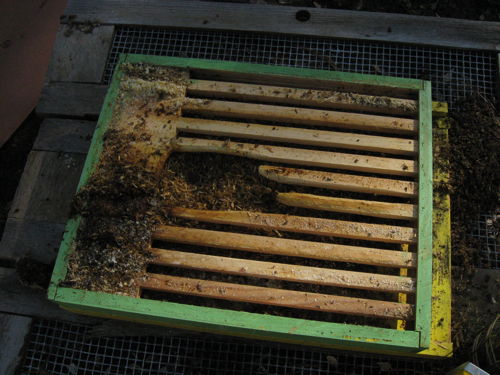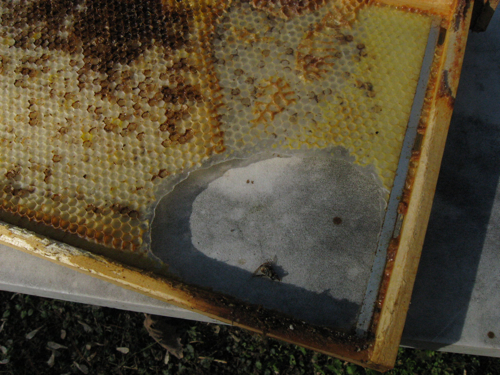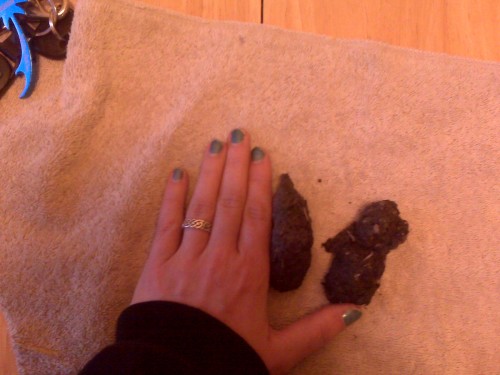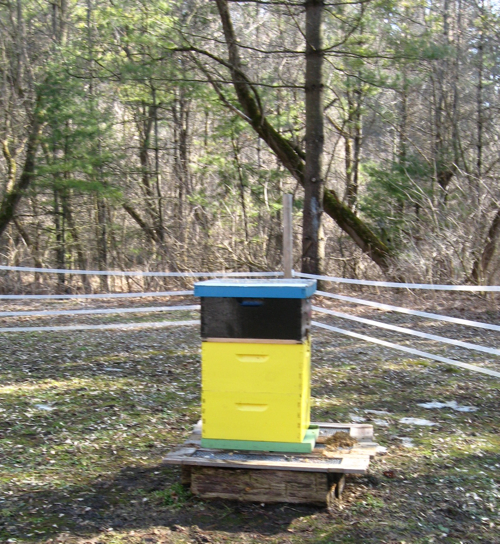Hello all, NBB here. Sharon’s a bit swamped with deadlines, so she’s asked me to fill in with a blog post about all the exciting things that are happening in the birding world. But since I avoid knowing anything about the birding world with great vigor, I instead present you with Birds Wearing Hats.

Hilarious, I think you’ll agree.
I want to talk for a moment about the bee sting I got last week, mostly because it was the thing that made me most afraid of keeping bees, and is, I think the thing that causes most people to be terrified of them.
I was the last of our beekeeping group to get stung (heck, even the dog got one before me), partly because I’m not around the bees as much as the others (some of us have jobs that require us to be at the same place and time every week), but also because I try to give the bees as wide a berth as possible. Don’t get me wrong, bees are cute as all get out and I love looking at them up close... from the safety of my bee suit. I don’t stand around the hives without one on, I don’t walk through the “bee highway,” and above all, I don’t run and flail, especially while yelling “don’t run and flail! Don’t run and flail!”
So, here’s what happened: there’s a little piece of wood or metal that you put in front of the entrance to the hive to control the flow of bees in and out. It’s called, helpfully enough, an “entrance reducer.” You use this at the beginning of the hive to encourage them to stay inside and make it their home. After a while, you take it off so that the traffic of returning foragers isn’t slowed down.
The entrance reducer was held on with a screw and to get the screw off , we had to move the whole hive off the base board so that I could turn the screwdriver. This, understandably, caused some consternation, and one of the girls decided to register a complaint. With her butt.
I will tell you now, all in all a bee sting isn’t that bad, at least in the ankle, which is where I got it. It’s like stepping on a nail, there’s a shock of pain and a sudden urge to move away. Afterwards it was like a twisted ankle, but like I say the first thought it “I think something really bad has happened,” followed quickly by “hey, when they sting you, don’t they release a pheromone that makes others want to sting you?”
Remembering neither to run nor flail, nor to do them while yelling “Don’t run! Don’t flail!” I hobbled over to the work table and said a few choice words. Well, one word, over and over. Take a guess. As Sharon and Neil made sure I didn’t get stung again (and wasn’t, you know, dying from a bee allergy), I took a deep breath and stock of what my body was doing. Did my feet itch? No? Was I short of breath? No. Was I going numb? No.
Really the only thing I was aware of was a lingering pain like a stab wound and wait, what was the other thing? That pulsing sensation kind of like oh my god I can feel the stinger pumping venom.
How Neil was able to pull the stinger out of my ankle using his still-gloved hand I do not know. I can only assume that writing a Newbery/Carnegie winning book has given him the tactile sense of a dozen men!
And that was it. It hurt. It was sore. I saw the bee that stung me, and stepped on her, not out of anger but to put her out of her misery. Wasn’t her fault, I was the one who took her house apart. Poor bee.
Then we put the hives back together, hobbled back and grilled up some dinner.
I guess what I’m trying to tell you is that you don’t need to be afraid of bee stings. You should definitely avoid them but it’s not something to go through your life being terrified of. On the grand scale of pain I’ve experienced, hitting my thumb with a hammer or getting a really bad sunburn are worse and last longer. Keep in mind, though, I was only stung once, and I had friends with me who’d been through this.
I’m curious to see how I act the next time I go out to the hives. I’ll probably wear boots--the ankles are the only part the bee suit don’t protect, after all--but I don’t feel any more afraid of them than I did last week. They’re still these fascinating, cute creatures, and I like to think that we’re helping them survive. But we have to be careful.

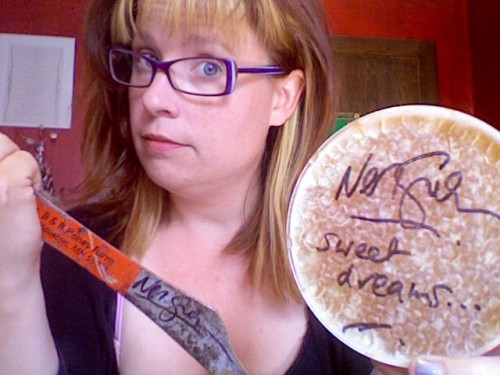 Just an FYI: if you are at
Just an FYI: if you are at 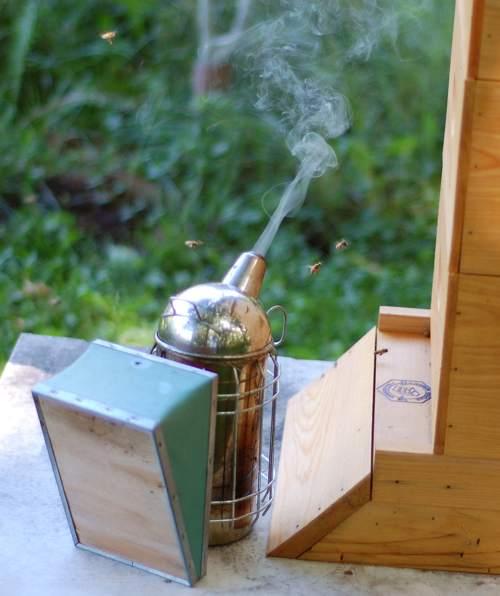
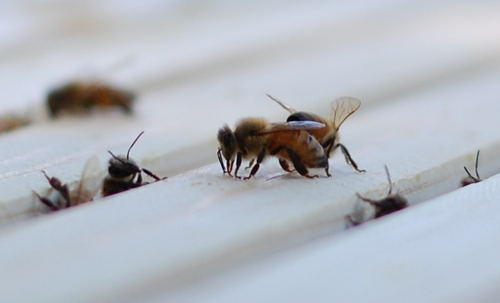
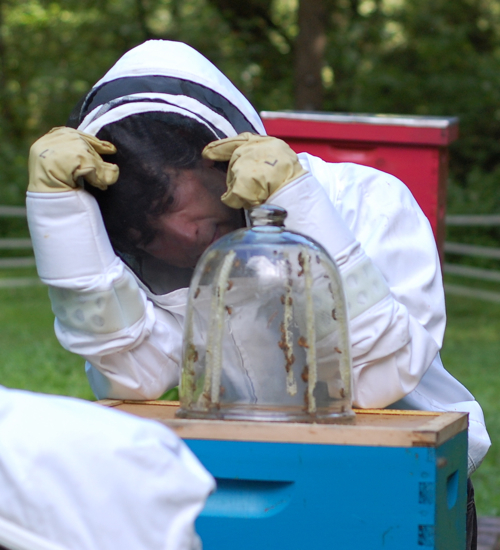
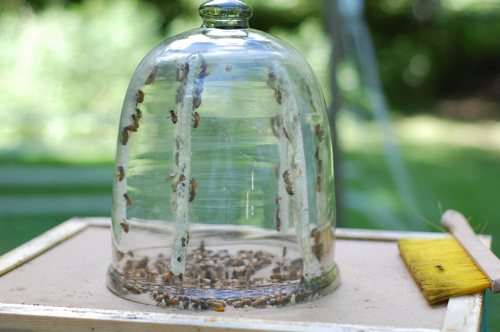
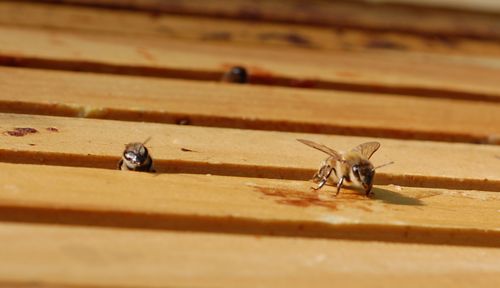
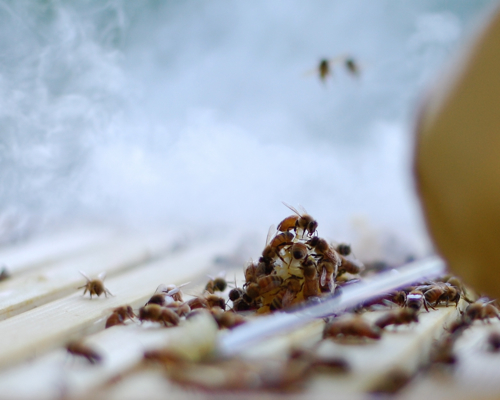
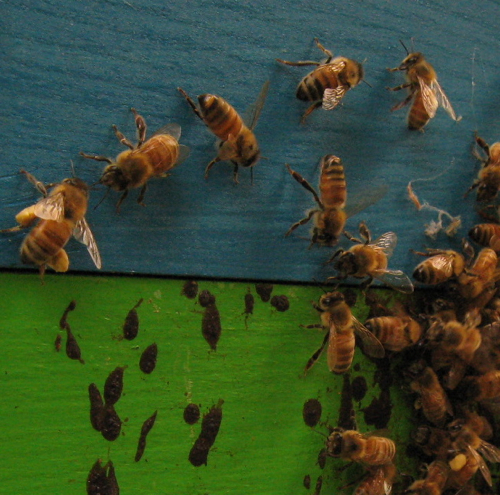 I know the reports for allergy sufferers has been rough this spring, but our bees our loving it. They are returning to the hives with massive pollen baskets. All four hives are still going strong this spring. I think this early spring allowed us to open them up early enough to get them ventilated and get a head start on the brood and set up for this summer's honey season.
I know the reports for allergy sufferers has been rough this spring, but our bees our loving it. They are returning to the hives with massive pollen baskets. All four hives are still going strong this spring. I think this early spring allowed us to open them up early enough to get them ventilated and get a head start on the brood and set up for this summer's honey season.
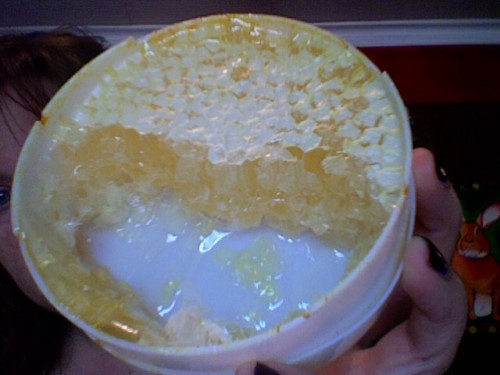
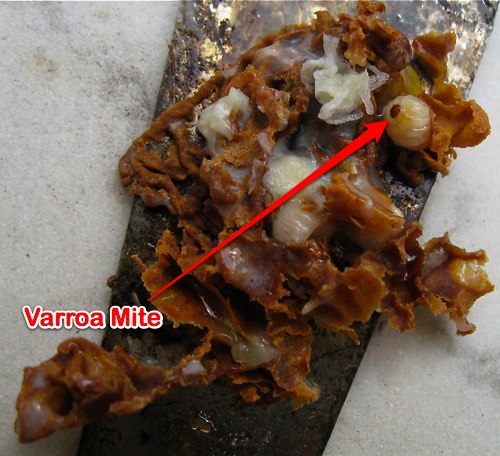
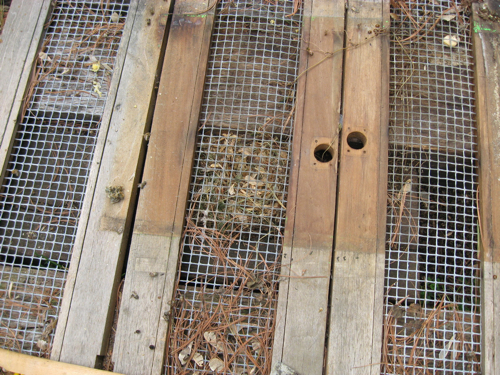
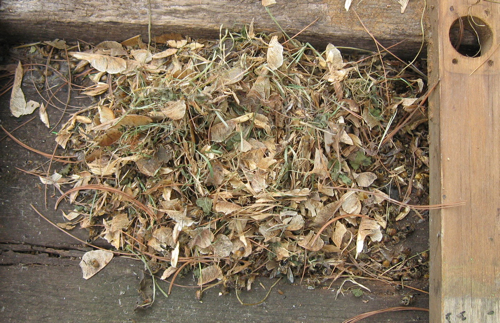
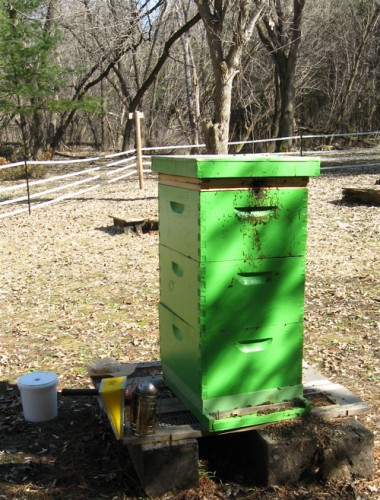
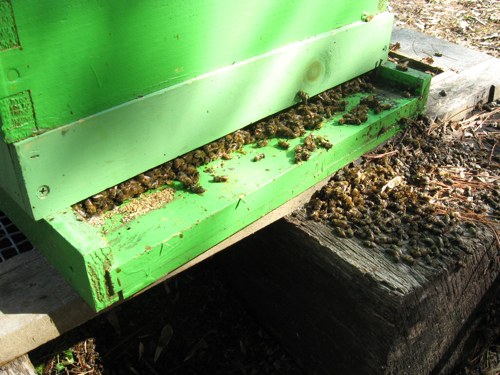
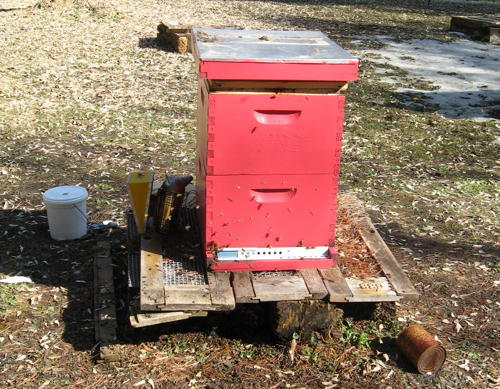
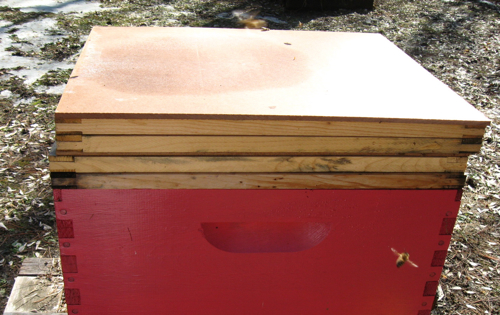
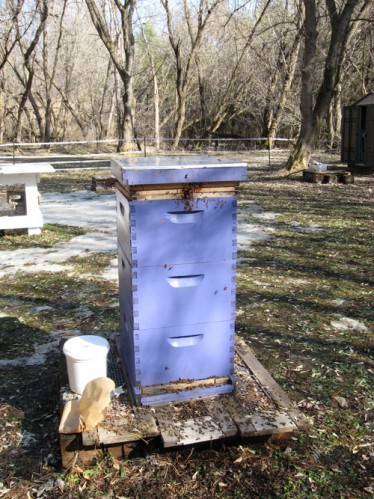
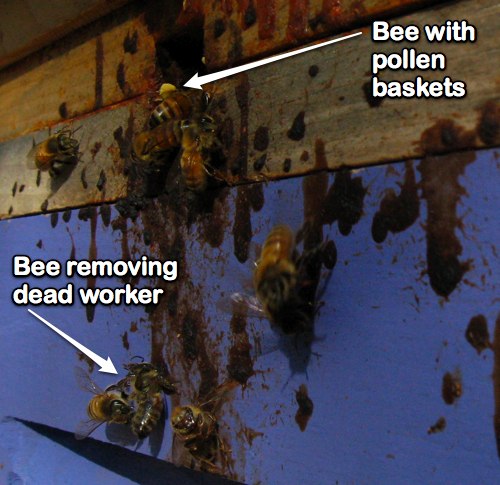
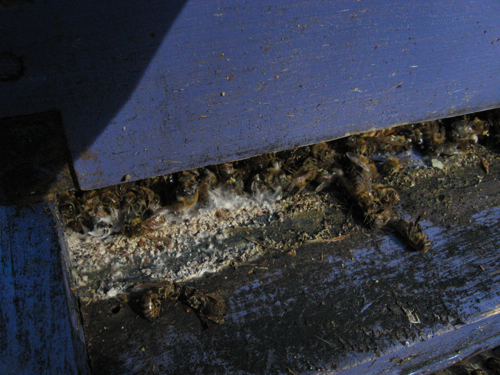 When I removed the entrance reducer, some of the dead, wet bees at the entrance had grown some fungus. It was just at the entrance and scraped out piles of dead bees from the bottom until a few live ones flew out. There was a good ball of bees at the top and they were very excited about the feeder pail and pollen patty.
When I removed the entrance reducer, some of the dead, wet bees at the entrance had grown some fungus. It was just at the entrance and scraped out piles of dead bees from the bottom until a few live ones flew out. There was a good ball of bees at the top and they were very excited about the feeder pail and pollen patty.